“The Porch” at the Venice Biennale, a Guest Post by Charlie Hailey
A few weeks ago I spent a fortnight in Venice helping set up “Porch: An Architecture of Generosity” and installing my book The Porch: Meditations on the Edge of Nature inside the U.S. pavilion at the 19th Biennale Architettura. Titled “Porch Unbound,” the installation unfolds the book’s pages in an accordion that stretches nearly one hundred forty feet, so that The Porch dances from room to room through Delano and Aldrich’s 1930s Palladian building. Pages rise and fall with a porch’s daily rhythms that are also tidal cycles, two-a-day for the book’s porch located on the coastal Homosassa River. Like the book, the installation is about climate change, and the ebb and flood of being on a porch is also the sea swell of the Anthropocene—its saw-toothed horizons of elevated storm surges and sunny-day inundations. Porch Unbound becomes a passeggiata, the traditional stroll that brings Italians out of doors and into conversation, and asks fellow travelers to think like a porch—to reflect on confluences of climate and architecture and to imagine possible futures.
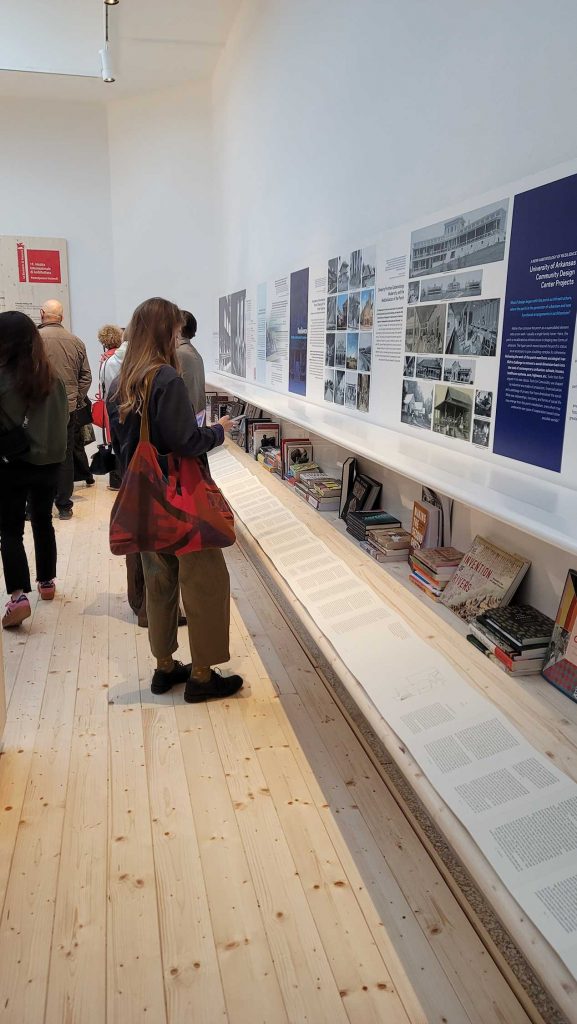
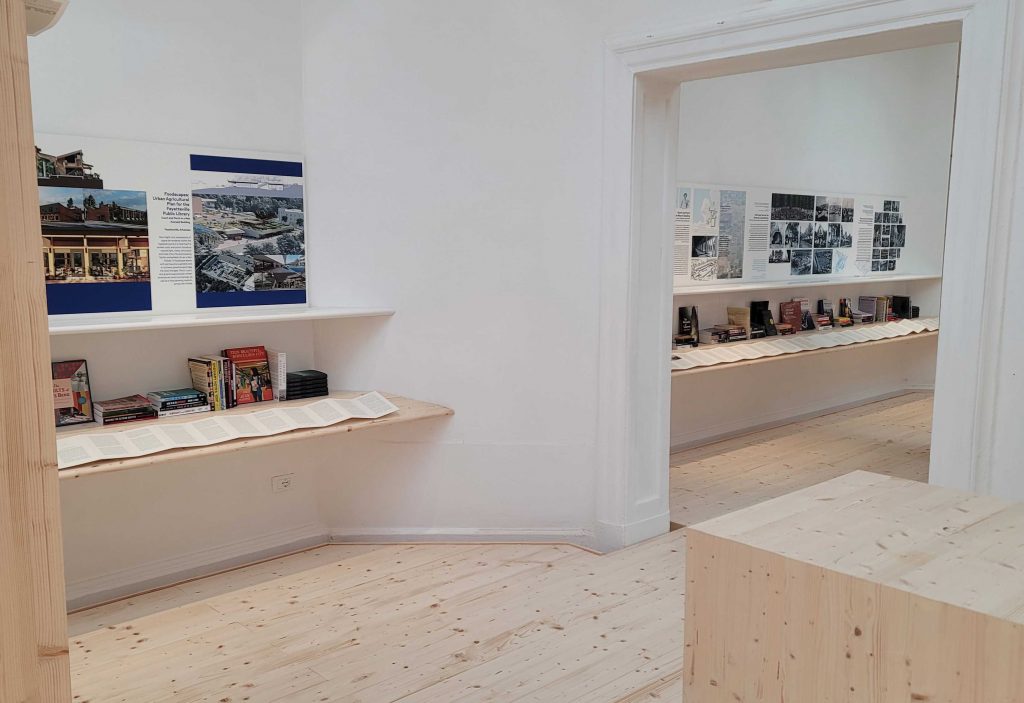

Each day, I walked to work along the lagoon to the Giardini, where the U.S. pavilion joins twenty-eight other national exhibition areas, and then back toward Aperol sunsets that silhouette San Marco’s campanile; and each day, life would scroll by, much like it does when you sit on a porch. Crane boats slide along canals with morning deliveries…a waiter adjusts chairs on the fondamenta…stray dogs bounce over arching bridges…a jogger overtakes me near a stack of passarelles, the elevated platforms that wait for acqua alta…fishermen turn from the lagoon with animated stories, their rods baited like afterthoughts. A couple looks up from breakfast on their yacht moored against the seawall… diesel and brine drift in the wake of a departing vaporetto…incoming tides rake the bronze folds of Augusto Murer’s sculpture of the Partisan woman, stretched across Carlo Scarpa’s Istrian stone platforms. In the lagoon’s standing waves—a mashup of wake from car ferries, seawalls, yacht hulls, waterbuses, barges, mud shoals, and water taxis, I recognized the crests of the installation that was slowly taking shape, as if it were flooding the pavilion.
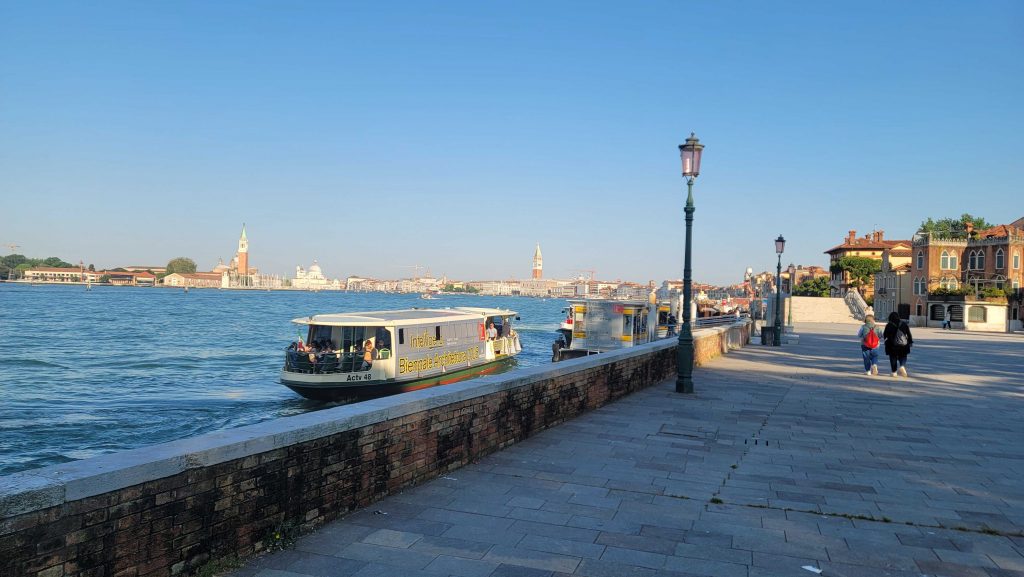
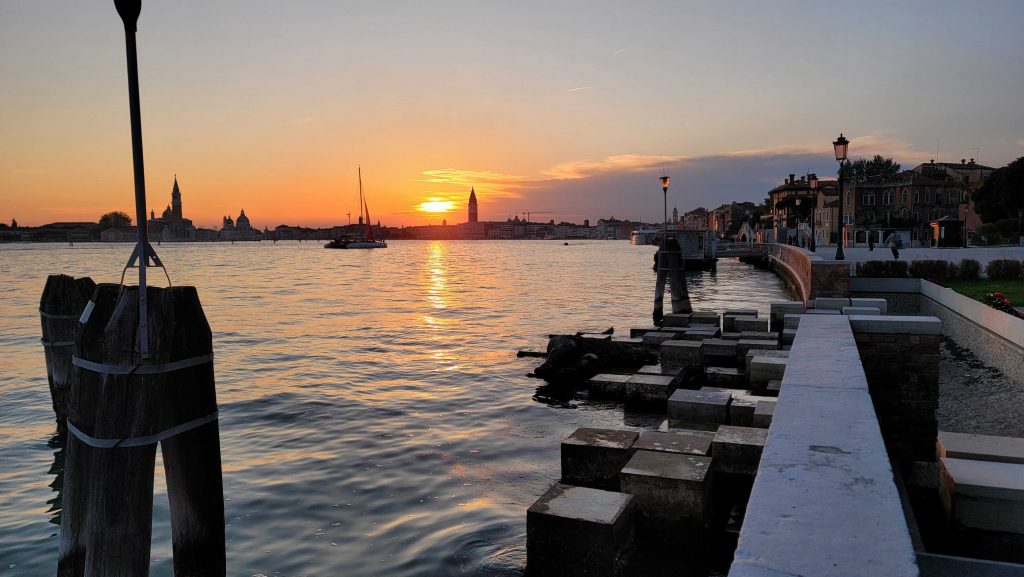
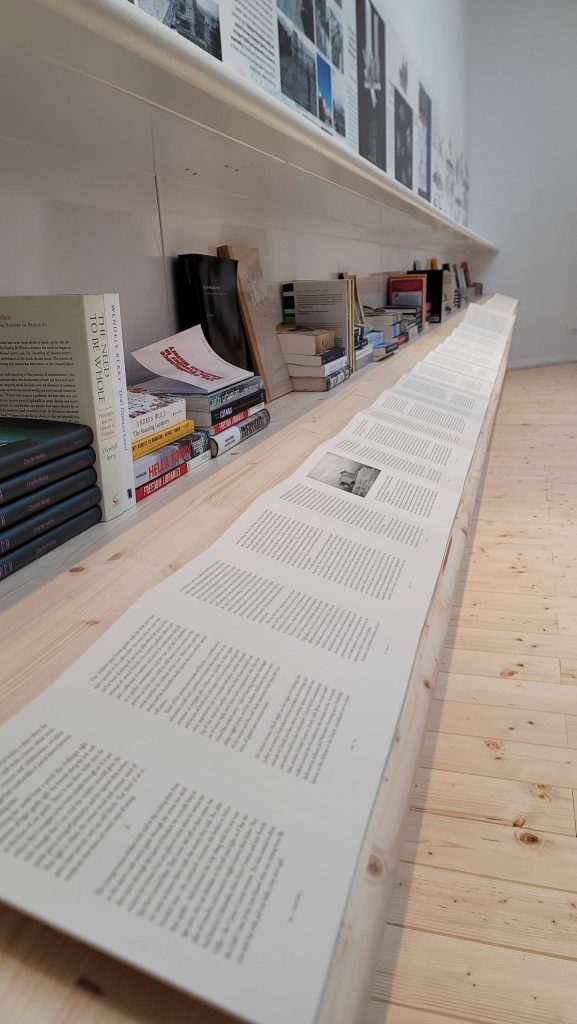
Porches connect and reveal. They link far with near, tiny details with massive changes, micro- with macro-climates, making visible what might otherwise remain hidden. In the installation’s description, I wrote: “During this Biennale’s seven months and as you move with these pages, sea levels in the Gulf of Mexico, where this porch lives, will rise three quarters of a centimeter.” To help visualize this change—one that is reshaping entire ecosystems along a coastal shelf that slopes only one foot per mile, the installation rises a third of an inch from beginning to end. It is a change that becomes apparent with the slow but immediate pace of a porch. Along the way, each wave’s trough might cradle a book pulled from the shelf above because porches also make room for reading. I had crafted the accordion’s panels at home, appropriately enough in a studio space that was once a side porch. Each panel is made of 80-pound cardstock, natural white to match the book’s feel, laminated to 4-ply matboard, trimmed and scored for folding. Computer-aided drawing helped dimension those subtle but consequential changes along the entire length, and then CNC milling in the fabrication lab made precise cuts for the birch plywood ribs that support the folded panels. Each slender rib has all the delicacy—and rigidity—of a walking stick.
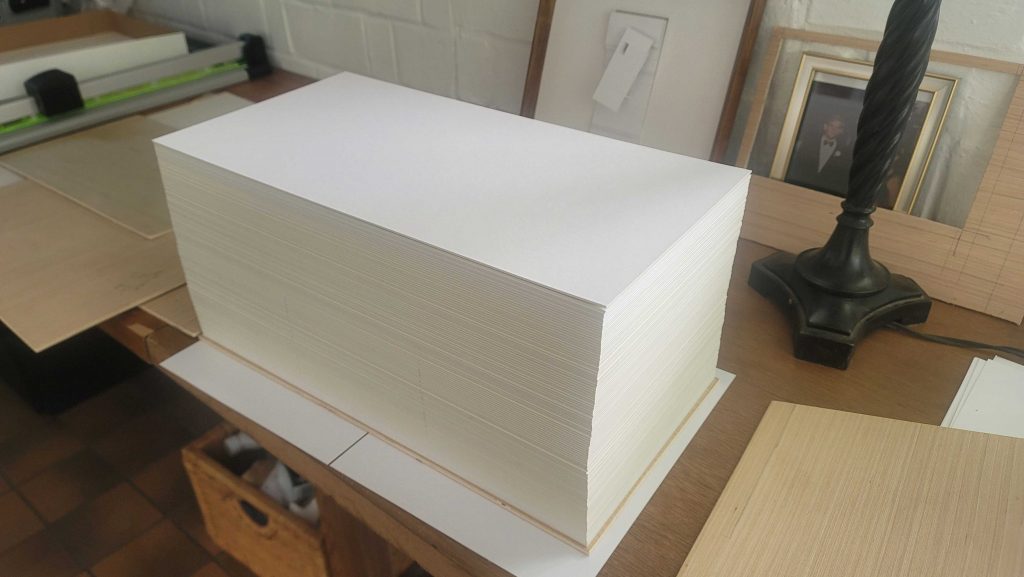
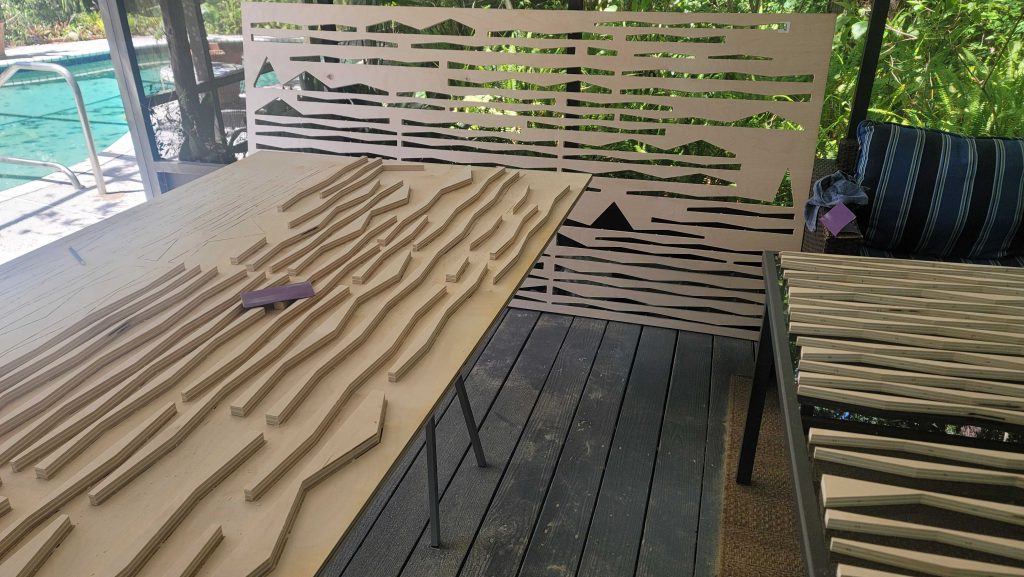
Everything had to fit into luggage for the flight to Venice, so I became a student of FAQs generously provided by Delta and TSA. I combed luggage manufacturer’s specifications and, as incongruous as it may seem, compared them to the dimensions of the book, the pavilion, and the display shelf. A porch is not necessarily a TARDIS, but it does time-travel and I am convinced they are bigger on the inside than they appear, so it felt strangely appropriate trying to reconcile off-the-shelf luggage and rules of flying with a deconstructed book and its future home in a pavilion across the Atlantic. Ninety-eight panels, each with three of the book’s pages, packed snugly in a Samsonite carry-on, and seventy-two ribs fit comfortably if tenuously in a plum-colored Delsey suitcase, cushioned by clothes and bubble-wrap and checked—anxiously—into the plane’s belly. After the flight, they rode in on a water taxi—a fitting entry across the lagoon into Venice.
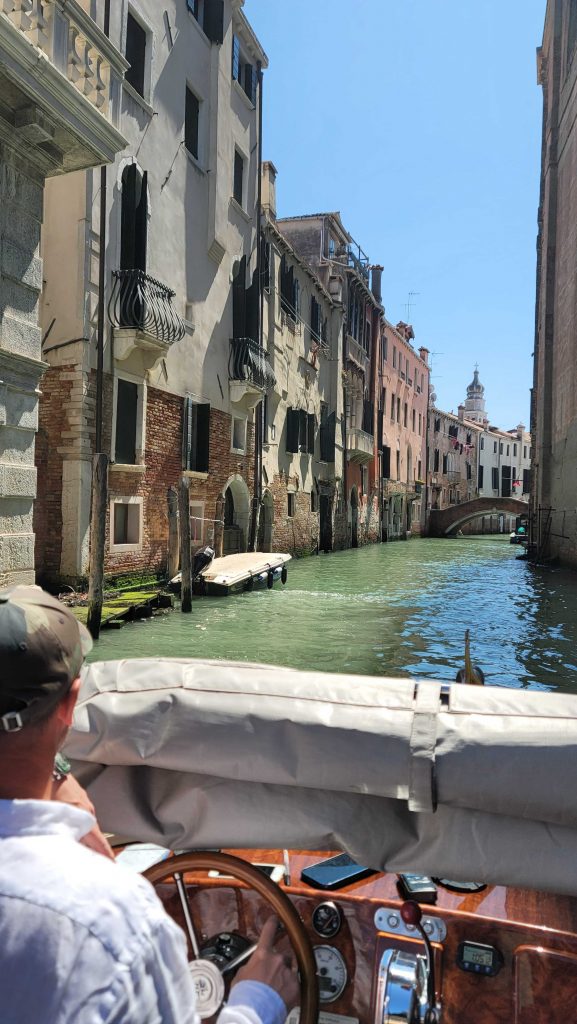

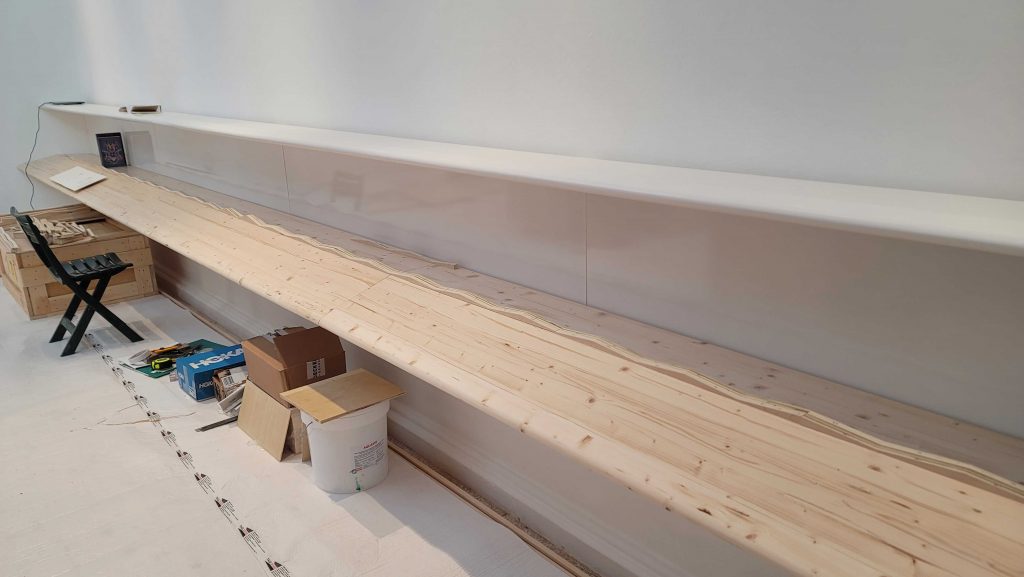

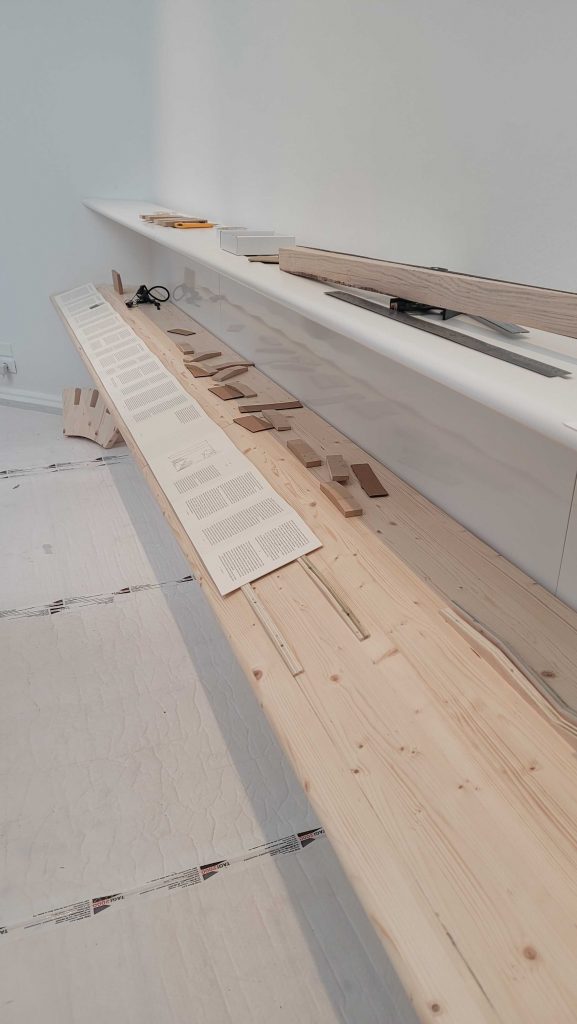
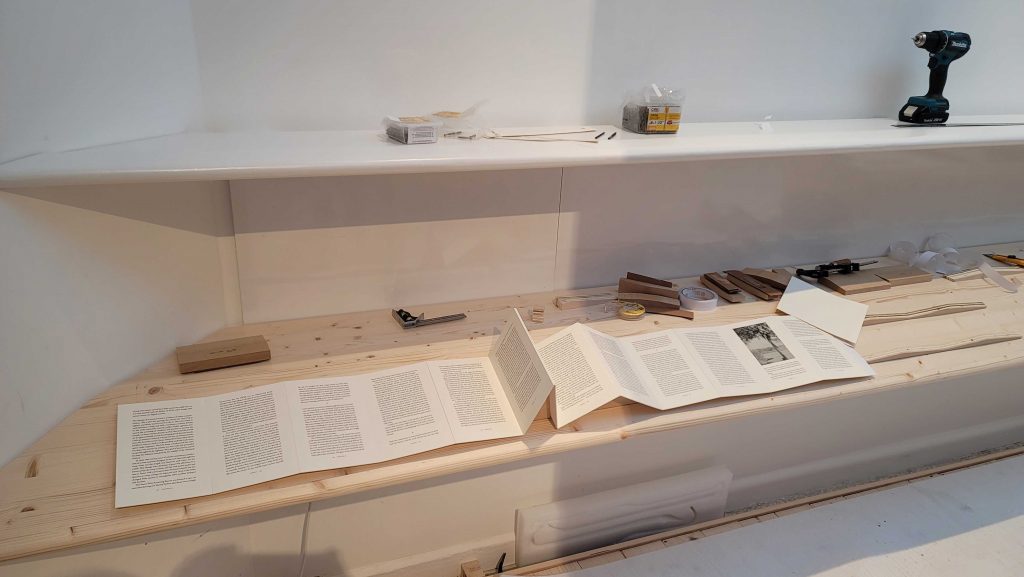
In the pavilion, I pieced together the panels over the course of five days; and along the way, I revisited parts of the book—its sketches, photos, and stories. I came to realize that porches are passages in their widest sense—bundles of stories and intricately spooled spaces where change unfolds, inviting you to travel in place. Fleeting but pressing invitations to find connections between Venice and a porch five thousand miles away, a place that is also wet, also flooding, fragile and vulnerable, a place where imagination must play an active role in reckoning with climate and its changes. For another six months, Porch Unbound will welcome visitors as it opens The Porch to many points of entry. After you pass under the blue canopy of the pavilion’s temporary front porch, turn left and you begin at page one. Turning right starts with the index. Straight ahead leads you to the rotonda and the middle of the “Screen” chapter, where “an osprey lifts across the mouth of the lagoon with a silvered branch in its talons.”



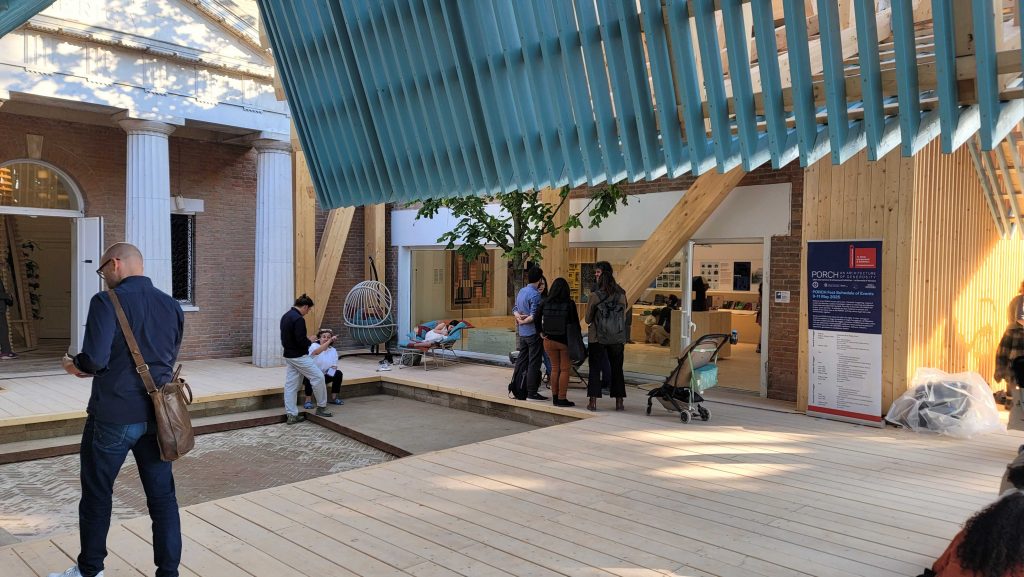
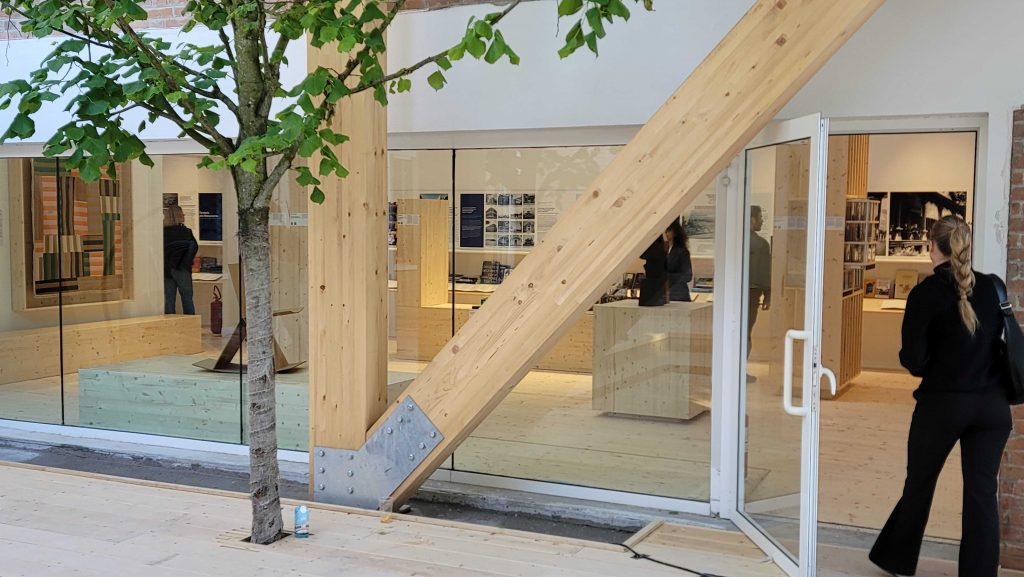

One evening, on the way back to my apartment, a Eurasian blackbird bathed in a puddle along the clay path near the Biennale entrance. A woman was filming its splashing dance with her phone, and everyone paused to watch. I had heard its lilting call from the shade trees at Paradiso café, as we took a break from the pavilion and watched the lagoon spilling over the seawall.
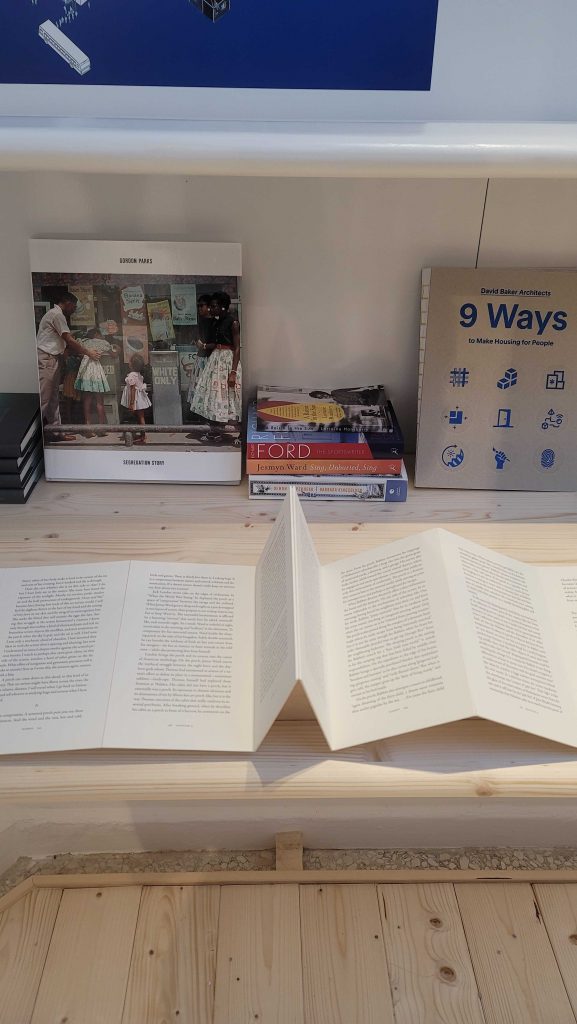
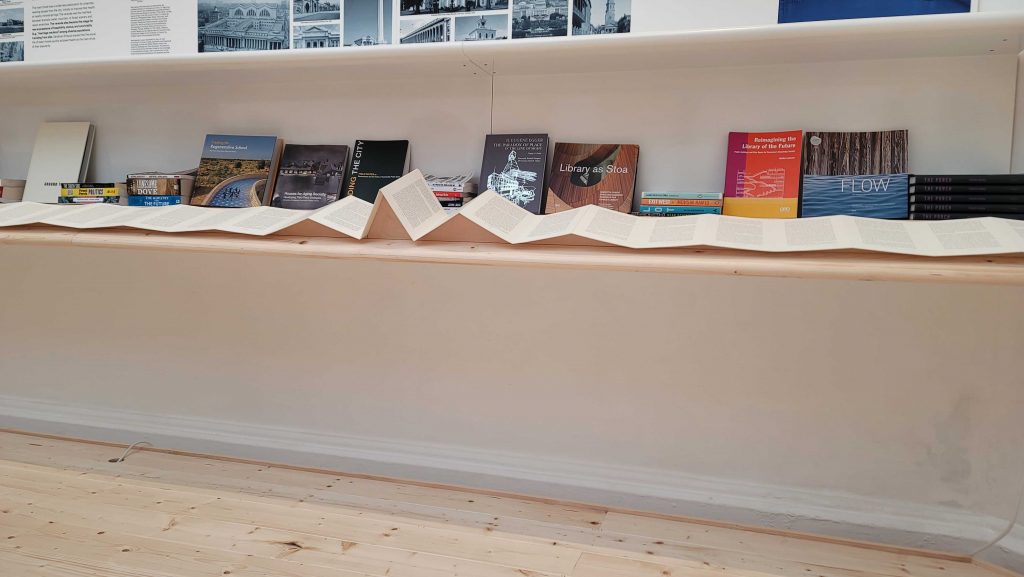

Charlie Hailey is an architect, writer, and professor. A Guggenheim Fellow and Fulbright Scholar, he is the author of six books, including Camps: A Guide to 21st-century Space. Hailey teaches at the University of Florida, where he was recently named Teacher-Scholar of the Year.
The Porch is available for purchase on our website. Use the code UCPNEW to take 30% off at checkout when you order directly from us.
